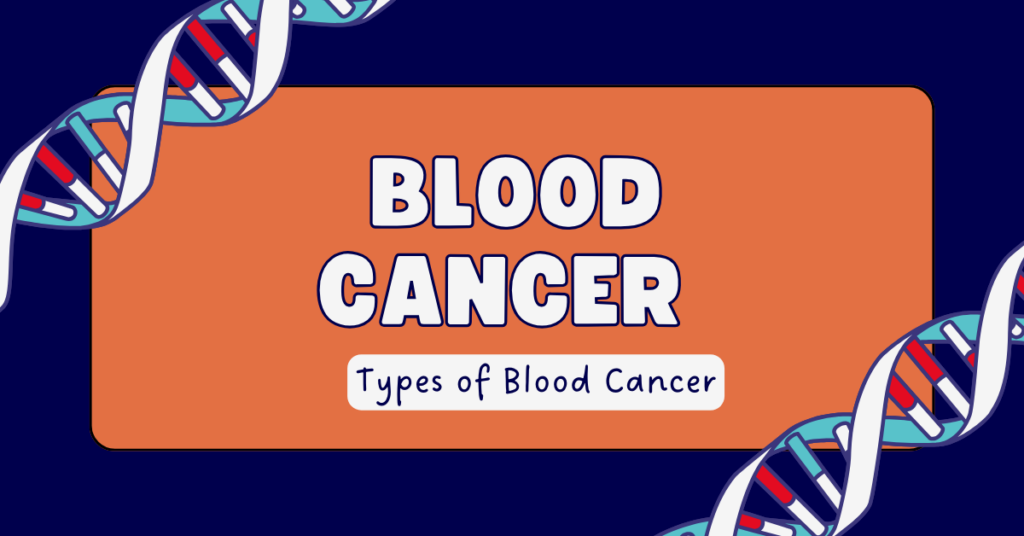Blood cancer, also known as hematologic cancer, is a broad term used to describe cancers that affect the blood, bone marrow, and lymphatic system. Unlike solid tumors, blood cancers involve the uncontrolled growth of abnormal cells within the blood or bone marrow. This article provides an overview of blood cancer, including its types, symptoms, diagnosis, and treatment options.
What is Blood Cancer?
Blood cancer occurs when abnormal cells grow uncontrollably in the blood, bone marrow, or lymphatic system. These cancers can disrupt the normal production and function of blood cells, leading to a range of health issues. The three primary types of blood cancer are leukemia, lymphoma, and myeloma.
Types of Blood Cancer
- Leukemia:
- Definition: Leukemia is a cancer of the blood and bone marrow characterized by the excessive production of abnormal white blood cells.
- Types: There are several types of leukemia, including:
- Acute Lymphoblastic Leukemia (ALL): Common in children but can occur in adults.
- Acute Myeloid Leukemia (AML): Affects adults and children, characterized by the rapid growth of myeloid cells.
- Chronic Lymphocytic Leukemia (CLL): Typically occurs in adults over 60 and involves a gradual buildup of abnormal lymphocytes.
- Chronic Myeloid Leukemia (CML): Mostly affects adults and is characterized by the overproduction of myeloid cells.
- Lymphoma:
- Definition: Lymphoma is a cancer that originates in the lymphatic system, which is part of the immune system.
- Types: The two main types are:
- Hodgkin Lymphoma (HL): Marked by the presence of Reed-Sternberg cells and often affects lymph nodes in the neck, armpits, or groin.
- Non-Hodgkin Lymphoma (NHL): A diverse group of lymphomas that do not involve Reed-Sternberg cells and can affect various parts of the lymphatic system.
- Myeloma:
- Definition: Myeloma, or multiple myeloma, is a cancer of the plasma cells in the bone marrow.
- Characteristics: Plasma cells are a type of white blood cell responsible for producing antibodies. In myeloma, these cells become cancerous and accumulate in the bone marrow, leading to bone damage and impaired immune function.
Symptoms of Blood Cancer
Symptoms can vary widely depending on the type of blood cancer but commonly include:
- Leukemia: Fatigue, frequent infections, easy bruising or bleeding, weight loss, swollen lymph nodes, and bone pain.
- Lymphoma: Swollen lymph nodes, persistent fever, night sweats, unexplained weight loss, and itchy skin.
- Myeloma: Bone pain, frequent infections, fatigue, kidney problems, and high calcium levels in the blood.
Diagnosis
Diagnosing blood cancer involves a combination of methods:
- Medical History and Physical Exam: The doctor will review your symptoms and medical history and perform a physical examination.
- Blood Tests: Complete blood count (CBC) and other specific blood tests can reveal abnormalities in blood cell counts or other indicators of cancer.
- Bone Marrow Biopsy: A sample of bone marrow is taken to check for the presence of abnormal cells.
- Imaging Tests: CT scans, MRIs, or PET scans may be used to identify the extent of cancer spread.
- Lymph Node Biopsy: For lymphoma, a biopsy of the lymph nodes may be required to confirm the diagnosis.
Treatment Options
Treatment for blood cancer depends on the type, stage, and individual patient factors. Common treatments include:
- Chemotherapy: Uses drugs to kill or inhibit the growth of cancer cells. It can be administered orally or through intravenous infusion.
- Radiation Therapy: Uses high-energy rays to target and kill cancer cells, typically used for localized tumors or lymphomas.
- Targeted Therapy: Focuses on specific molecules involved in cancer cell growth and survival, aiming to minimize damage to normal cells.
- Immunotherapy: Boosts the body’s immune system to recognize and attack cancer cells. This includes monoclonal antibodies and CAR T-cell therapy.
- Stem Cell Transplant: Replaces damaged bone marrow with healthy stem cells, either from the patient (autologous transplant) or a donor (allogeneic transplant).
- Supportive Care: Includes treatments to manage symptoms and side effects, such as pain management, antibiotics for infections, and blood transfusions.
Must Read :The Fitness of Mental Health: Embracing Holistic Well-being
Living with Blood Cancer
Managing life with blood cancer involves a multidisciplinary approach, including:
- Regular Monitoring: Ongoing medical evaluations to monitor treatment response and adjust as necessary.
- Support Systems: Emotional and psychological support from counselors, support groups, and family members.
- Lifestyle Adjustments: Maintaining a healthy diet, exercise, and coping strategies to manage side effects and improve quality of life.
Conclusion
Blood cancer encompasses a range of conditions that affect the blood, bone marrow, and lymphatic system. Early diagnosis and advances in treatment have significantly improved outcomes for many patients. Understanding the types, symptoms, and treatment options for blood cancer is crucial for managing the disease and enhancing quality of life. If you or a loved one is facing a diagnosis of blood cancer, working closely with a healthcare team can provide the support and guidance needed to navigate this challenging journey.


![Understanding Leukemia: A Comprehensive Overview [2024]](https://newstechblog.com/wp-content/uploads/2024/08/cancerHealth-1-1024x536.png)
![Coughing up Phlegm: Causes, Symptoms, and Treatment [2024]](https://newstechblog.com/wp-content/uploads/2024/08/Coughing-up-Phlegm-Causes-Symptoms-and-Treatment-1024x614.jpg)